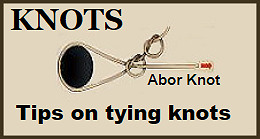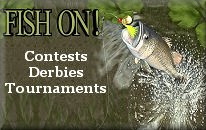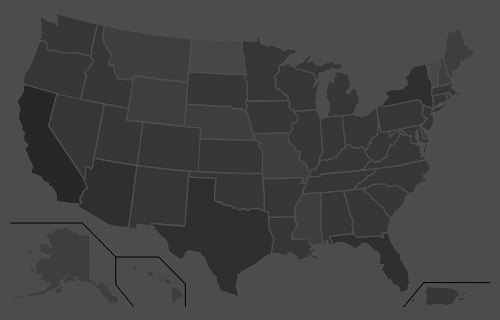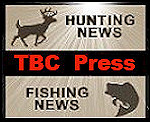“Our added winter moisture and active calling period led to a very long nesting and hatching season, starting in late April and extending into early summer, with chicks hatching as late as early July,” O’Dell said. “From a population standpoint, we are out of a deficit for the first time since 2001-2002. Quail are starting to pop up in places they haven’t been seen in a while.
“If you’ve never had the chance to experience what Arizona quail hunting built its name on, then this would be the year to get out and enjoy it.”
Meanwhile, hunters should note that the season for Mearns’ quail doesn’t begin until Dec. 4. It’s summer rainfall that plays a key role in nesting success and population numbers of this species. After a spotty and relatively weak monsoon across southern Arizona, these birds are likely to be abundant only in pockets that received sufficient precipitation this summer.
A valid Arizona hunting or combination hunt and fish license is required for all hunters 10 and older. Those hunters under 10 must either have a valid hunting or combination hunt and fish license, or be accompanied by an adult who possesses a valid hunting or combination hunt and fish license. Licenses can be purchased online or at license dealers statewide. A youth combination hunt and fish license (ages 10 to 17) is $5.
The general bag limit is 15 quail per day in the aggregate, of which no more than eight may be Mearns’ quail (when the Mearns’ season opens Dec. 4). The general possession limit is 45 quail in the aggregate after opening day, of which no more than 15 Gambel’s, scaled or California quail in the aggregate may be taken in any one day. After the opening of the Mearns’ season, the 45-quail possession limit may include 24 Mearns’ quail, of which no more than eight may be taken in any one day.
More quail-hunting information can be found on the department’s website at https://www.azgfd.com/Hunting/. Another resource for both new and experienced hunters alike is “An Introduction to Hunting Arizona’s Small Game.” Written by Randall D. Babb, the 196-page, full-color book covers where and how to hunt small game birds (like quail), squirrels, rabbits, ducks and geese. It also includes how to prepare and cook your harvest, with illustrations and recipes. The book can be ordered for $16.95 at www.azgfd.gov/publications.
Finally, hunters should check out O’Dell’s techniques for field-dressing quail at https://www.youtube.com/watch?v=3gRwZAcWzzk.
####
Publishers Notes: OUT OF STATE HUNTERS, FISHERMEN & OUTDOOR ENTHUSIASTS; Due to the Covid 19 pandemic, there could be limitations for OUT of STATE hunters, fishermen and other outdoor enthusiasts to include a 14-day quarantine requirement or negative COVID-19 testing alternative. Please check with the State's Department of Natural Resources BEFORE you travel or apply for the 2020 Fall Hunts.
Disclaimer: The views expressed on this site are that of the authors and not necessarily that of TBC Press
Vermont 2022 Trout Fishing Season Opens
Submitted by: TBC Press
Posted on: 04/12/22
The Backcountry Press
The country's premier daily HUNTING, FISHING & OUTDOOR news in the USA and around the globe. Read whats happening in your neck of the woods & beyond.
© 2020 TBC Press - All Rights Reserved Website Design by:
News # 14743
Larger baits can often be more effective for enticing early-season trout into biting. Spin-anglers should try nightcrawlers, egg imitations, or bright colored spoons and spinners. Fly anglers may find success in the early season by drifting large, more visible flies such as wooly buggers, streamers, or San Juan worms along the bottom in slower pools and runs.
Trout will often hold close to the bottom in the deeper areas of streams during high flow conditions to conserve energy. Choose locations and tactics that allow you to fish using a slow retrieval right along the bottom. Focus on deep holes behind current breaks created by big boulders, downed trees or log-jams where trout may be resting. If possible, approach the hole from downstream as trout will often orient themselves facing the current.
While Vermont offers excellent and diverse fishing opportunities for wild trout, stocking also occurs in many lakes, ponds, streams, and rivers where wild trout populations are low or absent. This generally happens in April and May each year once the ice has melted and following spring runoff.
“Early in the season, like on opening weekend, you’ll probably have more success if you focus on waters known to hold wild trout,” said Good. “Despite unpredictable weather during early spring, each year anglers report catching impressive trout during opening weekend.”
Good also reminds anglers to check the department’s website frequently as updates are made to the Trout Stocking page. “This is a great tool for anglers to see what nearby waters have been stocked, as the page gets updated several times per week,” said Good. Visit this link https://anrweb.vt.gov/FWD/FW/FishStockingSchedule.aspx and click the “See What’s Been Stocked” button to stay informed as the spring progresses.
Anglers who like to fish and release their catch don’t need to wait for opening day. Nearly all waterbodies are now open year-round to catch-and-release fishing for trout in Vermont. Check the 2022 Vermont Fishing Guide and Regulations which is available free from license agents, and it is on Vermont Fish and Wildlife’s website at this link: https://www.eregulations.com/vermont/fishing/
A helpful overview of the new fishing regulations can be found at: https://vtfishandwildlife.com/new-2022-fishing-regulations-overview
The department reminds anglers that in almost all cases regulations have been simplified. For any river, stream, lake, or pond not listed in the Index of Rivers and Streams or Index of Lakes and Ponds go to General Fishing Regulations on page 52.
####
Vermont’s trout fishing season opened Saturday, April 9.
Despite lingering snow cover in some areas of the state, the Vermont Fish and Wildlife Department says anglers can still have fun and be successful early in the season if they keep a few strategies in mind.
“Just like any other time of year, anglers fishing early in the spring should adjust their tactics based on conditions,” said State Fisheries Biologist Shawn Good. “Trout will become more active with warmer water temperatures. If you can find a good location and present your bait or lure without spooking the trout, you’ll have a good chance of catching a few fish, and enjoy a nice day outside.”
Good adds that finding a small to medium low-elevation river or stream that is not too murky from spring runoff can be key. Trout are coldblooded and may be slow to bite especially with low water temperatures, so it is important that they can also see your bait, lure or fly.












